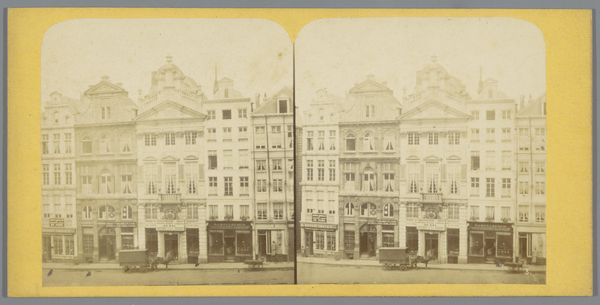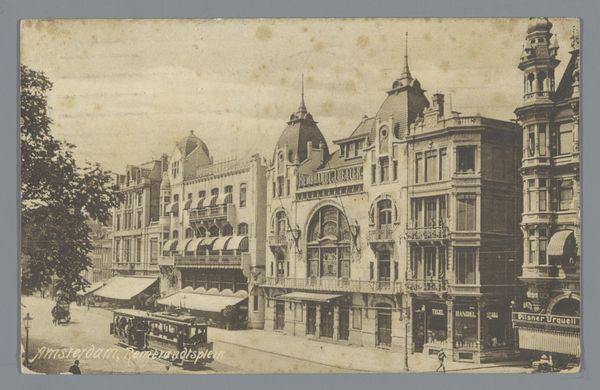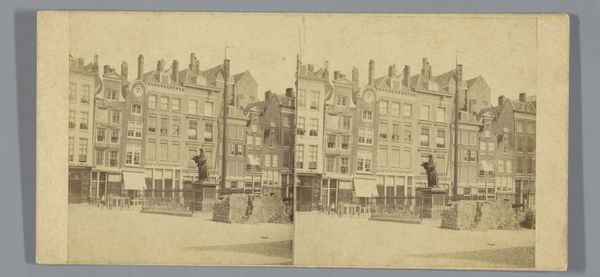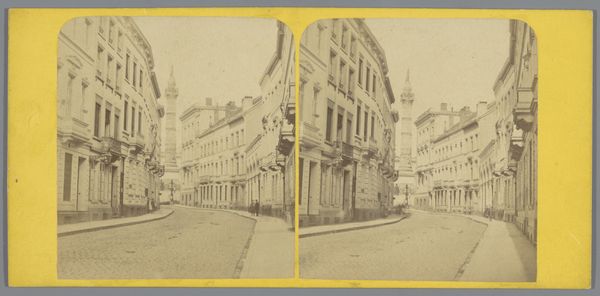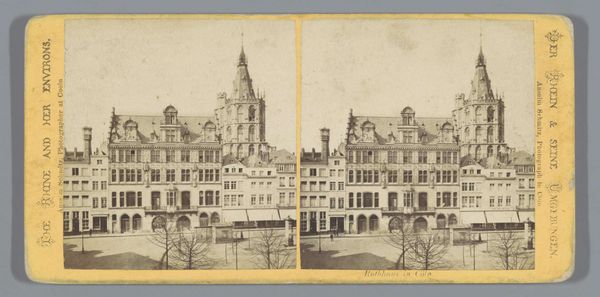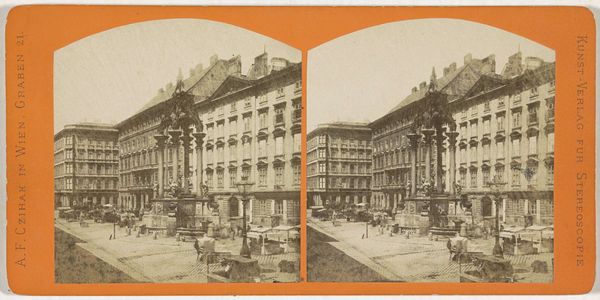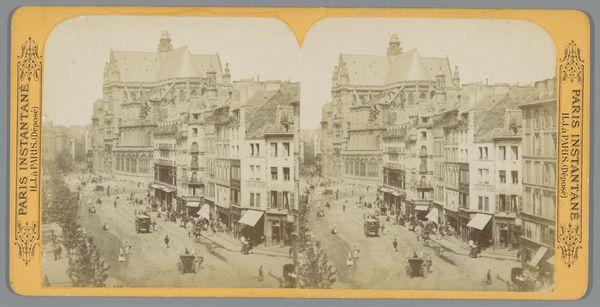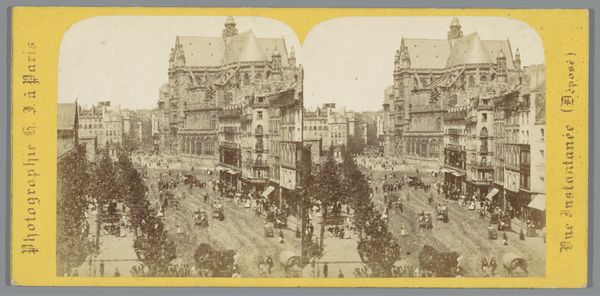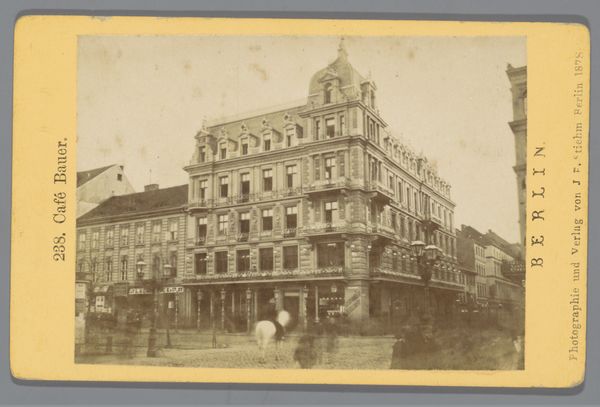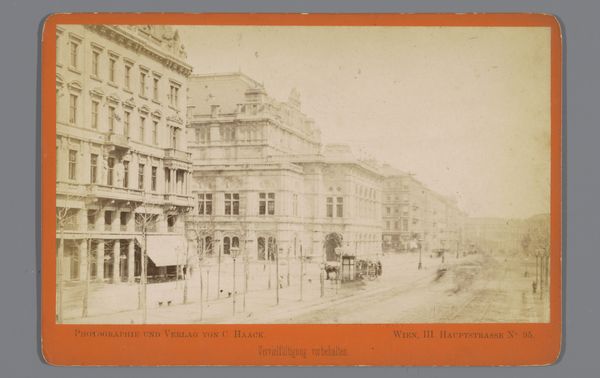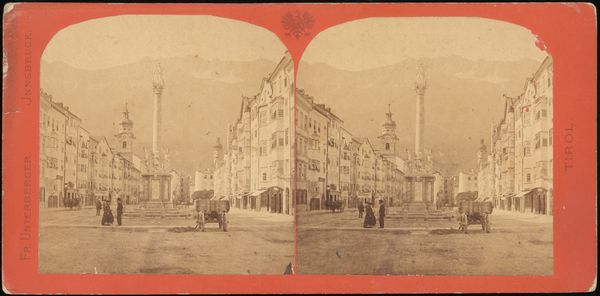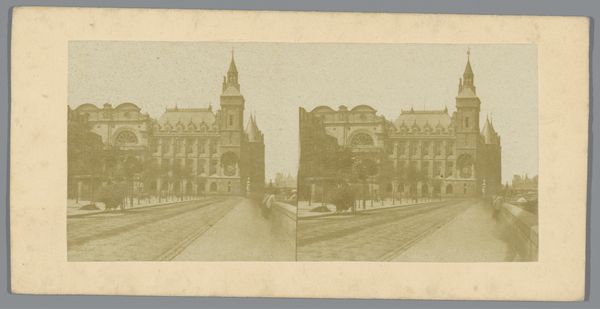
print, photography, albumen-print
#
portrait
# print
#
photography
#
cityscape
#
academic-art
#
albumen-print
#
realism
Dimensions: height 81 mm, width 165 mm
Copyright: Rijks Museum: Open Domain
Curator: This is Vilhelm Tillge’s albumen print, "Amagertorv in Kopenhagen," placing us somewhere between 1873 and 1890. It’s a cityscape, a real slice of life. Editor: My initial feeling is quiet grandeur, despite the bustle. The buildings loom, casting subtle shadows. It's a stage for everyday dramas, frozen in sepia. Curator: It really encapsulates that sense of historical presence. Notice how Tillge utilizes the albumen process; that sepia tone you mention almost acts as a veil, lending the scene a timeless quality, while still very much marking it as past. Consider the social impact too. Editor: Absolutely. I’m immediately drawn to the material conditions, though. Those horse-drawn carriages lined up – they signify a certain level of commerce, of societal function, the literal horsepower that drives a city. The albumen process itself speaks of deliberate craft and its reliance on very specific chemical compounds. Curator: Good point. Think of albumen's symbolic load: the light and shadows seem to solidify social strata; buildings become characters themselves, echoing their inhabitants. This meticulous capturing of urban life speaks volumes. Editor: The materiality definitely underpins this idea. Albumen printing wasn’t necessarily accessible to everyone. It required skill, resources. This wasn't just capturing a street; it was carefully constructing an image, potentially with a particular view of Copenhagen society in mind, filtered through the technology of its time. Who got to control that vision? Curator: A complex interaction, indeed, shaping perception. I find myself captivated by the way that the composition directs our gaze toward the horizon line. Are we supposed to see endless progress or a deep-seated status quo? Editor: Progress, but controlled. I find it less of a window to history and more like a manufactured historical moment designed for specific consumption. Considering the material invested, was the target consumer domestic or international? Souvenir, perhaps? Curator: Yes, food for thought – both the seen and unseen forces in constructing and conveying reality, then and now. Editor: Definitely gives a lot to chew on. Looking at this reminds me to keep questioning whose version of the past we are holding.
Comments
No comments
Be the first to comment and join the conversation on the ultimate creative platform.
